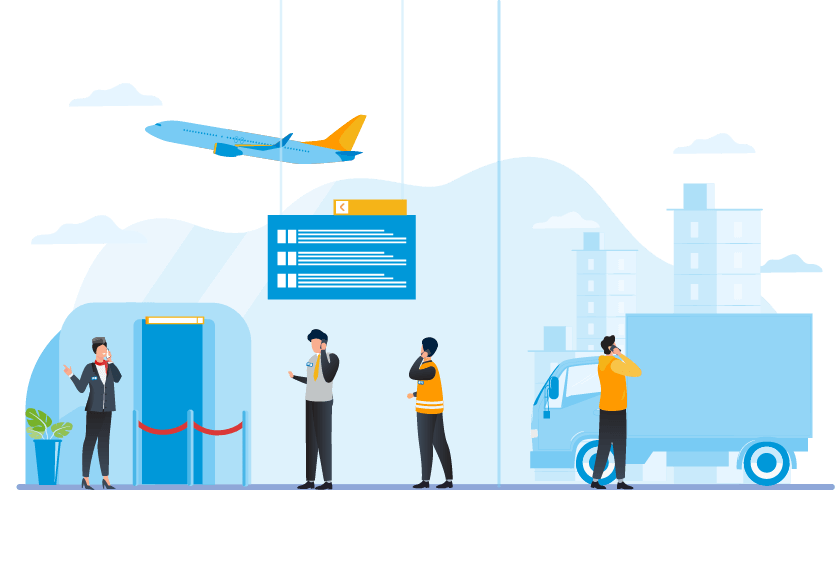Logistics efficiency is one of the most important components of supply chain management. It’s also one of the most complicated, as it requires a variety of different solutions to be put in place. We’ve compiled a list of five practical ways to improve your logistics efficiency so that you can start seeing results quickly!
1. Set up a supply chain management system
Supply chain management is an important aspect of logistics that can help you to streamline your operations and maximize efficiency. A supply chain management system allows you to track inventory levels, spot shortages or overages, and plan for future purchases in order to avoid running out of stock.
Setting up a supply chain management system is not difficult; there are many software programs available that can help you do so. If possible, it’s best if you work with an outside consultant who has experience setting up similar systems in other companies–this will ensure that they know exactly what needs doing and how best to do it.
2. Reduce product sourcing costs
The number of suppliers, SKUs, and locations you use can have a big impact on your logistics costs. A single supplier for a product family or category may reduce the number of shipments you need to make and help increase efficiency through faster shipment turnaround time (TAT). By using a single supplier for multiple types within the same category, you’ll also be able to leverage economies of scale in inventory management and transportation costs.
3. Manage transportation costs
As a logistics manager, you may have already considered the option of outsourcing transportation services to a third party. This can help reduce costs by reducing your company’s reliance on expensive internal resources and saving money on fuel or other expenses that come with managing your own fleet.
However, there are other ways to cut down on transportation costs:
Use a dedicated fleet that travels only between two locations. This will allow you to consolidate all of your shipments onto one route instead of splitting them among multiple modes of transportation.
Choose less expensive modes of transportation such as trucking over rail or air freight when possible; these options tend not only cheaper but also more reliable than trains or planes in terms of getting goods where they need to go without getting lost along the way!
Good and reputable freight companies in Australia are one way to save money on shipping. These companies specialize in moving goods from one location to another and offer discounted rates for customers who ship frequently or have high volumes of goods to transport. They also provide insurance for your shipments, which can help reduce your liability if anything happens during transit.
Find out what kind of freight services are available in your area and compare them with other services before choosing one.
4. Take advantage of available technology, including automation, RFID and predictive analytics
Automation is the use of control systems and devices to reduce human labor. It’s becoming more common in logistics because it helps companies run more efficiently by reducing their need for workers or increasing their output per worker. For example, a warehouse might have automated conveyor belts that can move boxes from one place to another without anyone having to do it manually; or a forklift may be able to lift heavier objects than would normally be possible by hand (and without requiring extensive training)
RFID tags are tiny computer chips that transmit data wirelessly when activated by radio waves emitted by readers placed throughout a warehouse or facility; they’re commonly used for inventory management purposes because they allow you to track where specific items are stored within your storage facilities at any given time–which means less time spent looking for things!
5. Improve distribution center operations and design for efficiency and safety
Designing your DC for efficiency and safety is a smart move. Here are some ways to make sure you get the most out of your distribution center:
- Plan for the future. It’s important to design a system that can grow with your business needs, so think about what kind of products or services might be coming down the line and plan accordingly. If you anticipate an increase in e-commerce sales, there should be room for larger product shipments within each storage aisle; if not, there will be too much space wasted on pallets that don’t need it–and this could lead to increased costs as well as safety hazards due to uneven floors or insufficient lighting levels (which could cause accidents).
- Think green! Energy consumption has become one of the biggest challenges facing logistics companies today–and most facilities consume far more energy than necessary because they weren’t built with environmental friendliness in mind from day one (or even during renovations). From LED lighting systems that use less power than traditional bulbs do all the way down to improving insulation around exterior walls so heat doesn’t escape through windows during winter months–there are many ways you can reduce greenhouse gas emissions while saving money on utility bills at home base by making thoughtful decisions when designing new buildings or remodeling existing ones…
There are many ways to improve logistics efficiency, but it all starts with knowing where your company is and where it needs to go. By taking the time to examine your existing operations and develop a plan for improvement, you can ensure that your company stays competitive in today’s fast-paced world of e-commerce.








